Forest Information Billboard
Issue 3, October 2015

Silva 2015 and European Forest Week - Last Days to Register!
The 3rd European Forest Week and SILVA2015 is a joint session of the UNECE Committee on Forests and the Forest Industry (COFFI) and the FAO European Forestry Commission (EFC). It will be hosted by Switzerland in the Alpine village of Engelberg from 2 - 6 November 2015.
This event, which will discuss the value of forests from different angles, will bring together stakeholders from forest and non-forest sectors: government representatives and delegations, forest owners, businesses, environmental NGOs, academics and students from Europe, the Russian Federation, Central Asia, the Caucasus and North America. Will you join as well?
One of the organizers’ main objectives is to provide a unique opportunity for participants to make an impact on pan European and global discussions related to forests, share their best practices and engage with other stakeholders. Do you also want to share your experiences or learn from others?
The deadline for registration to the European Forest Week events is 30 October 2015. Don't miss it!
Join the celebration dedicated to "The Value of Forests" at the 3rd European Forest Week from 2 - 6 November, 2015 in Engelberg, Switzerland. Looking forward to seeing you in Engelberg!
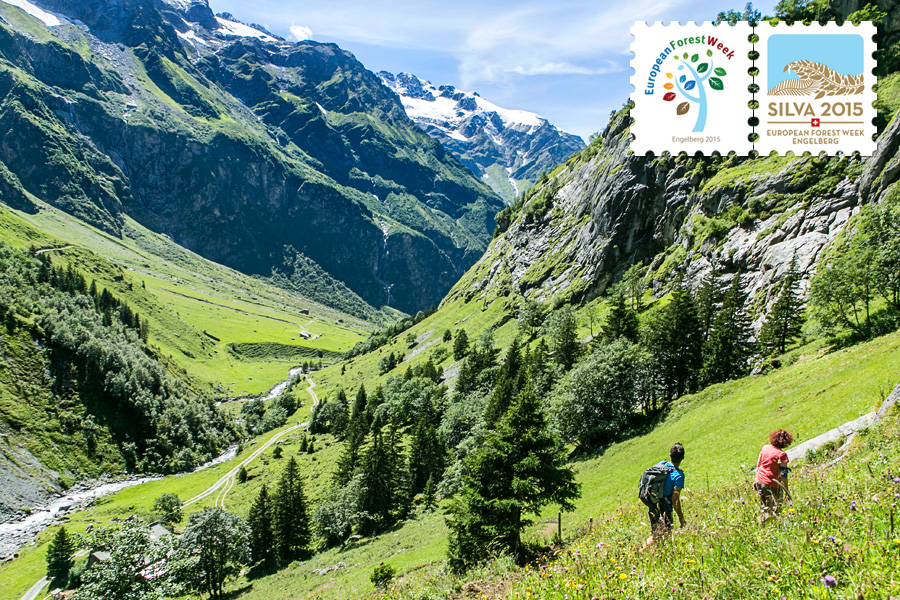
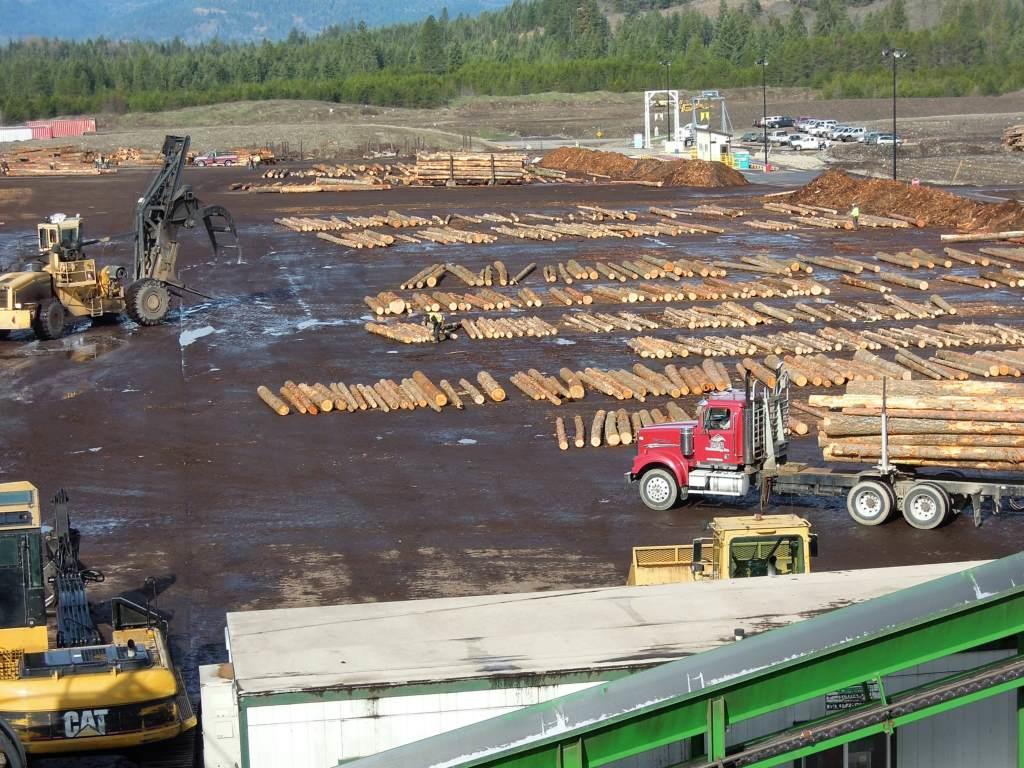
Forest Products Annual Market Review 2014-2015 is out!
The joint Forestry and Timber Section of the UNECE and FAO has published the Forest Products Annual Market Review, which covers forest products markets for 2014 and the first half of 2015. The publication provides a first look forest products information on production, consumption and trade data; and market intelligence on the 56 member States of the UNECE region, and key countries outside, which are influencing UNECE region markets.
In general, forest product markets in the UNECE region continued to grow in North America and Europe in 2014. There were mixed results in the CIS in 2014, with increases in the consumption of industrial roundwood and pulp and paper but decreases of both sawnwood and panels. However, Production and exports increased in the CIS for all major forest products, supported by a much-weakeer Russian rouble.
UNECE Member Countries exported almost 93 million m3 of raw logs in total, of which about two-thirds of the volume was traded between countries within the region. Log export has attracted the attention of policymakers in some countries, with some either planning on or already implementing limitations on the export of raw logs.
In the last four years, paper and paperboard consumption has fallen by about 10% in North America and by 5% in Europe. Consumption of newsprint paper in 2015 will be about half of what it was just ten years ago in North America. On the plus side, positive changes have occurred in the wood pellet manufacturing sector, with consumption increasing significantly in the UNECE region.
You can read more by downloading the advance electronic version of the publication
here.
Forest Products Annual Market Review - Statistical Annex
Accompanying the Forest Products Annual Market Review is an extensive
statistical annex. This includes data for the three subregions of Europe, CIS and North America and for selected countries.
Data show production and trade statistics for 2010-2014 for 20 products from roundwood to furniture along with selected forecasts for 2015.
The latest forest products trade flow information, showing the share of world trade between leading countries for 8 groups of forest products, is now available. The product groups are industrial roundwood, sawn softwood, sawn hardwood, wood-based panels, woodpulp, paper, further processed sawnwood, furniture, and wood pellets.
This latest tables (2012-2013 data) can be found
here. Tables from previous years can be found
here.

UNECE/FAO and COST Action FACESMAP Forest Ownership Reporting Update
The Forest Ownership reporting process is now in its final phase. The last questionnaires are expected to be submitted by the end of October 2015. We would like to address our gratitude to member States which have already submitted their questionnaires as well as member States which are currently finalizing their questionnaires. Furthermore, we would like to invite those member States which haven’t started to work on the questionnaire to participate in the reporting process and help to improve knowledge on forest ownership in the UNECE region.
Data collected through the national reporting process, together with other available information, will serve as a basis for a production of a study on forest ownership in the UNECE region. At present the UNECE/FAO secretariat in close cooperation with COST Action FACESMAP and other organizations closely related to forest ownership are involved in the preparatory work for a production of a forest ownership study. In order to inform stakeholders of the status of the project and to discuss further procedures, a meeting of the project core group is scheduled for 17 November 2015 in Geneva.
If you are interested to learn more about the Forest Ownership Project kindly visit our
website or contact
[email protected]

Forests, Agro-Forestry and Wood Industry in France : What Climate Mitigation Potential in the Medium and Long Term?
Dynamic management of forests and timber industry, afforestation and demand for wood are considered by the IPCC (2014) as fundamental tools for mitigating climate change. But what is and what could be their contribution regarding GHG (greenhouse gas) mitigation throughout the French territory?
This note describes how to measure this contribution. It encrypts today (2012) and prospective horizons to 2030 and the long term, according to two scenarios (business as usual, dynamic scenario). The dynamic scenario, which is both ambitious and realistic, would allow a further reduction of GHG emissions (up to 50 MtCO2 per year in the long term compared to current emissions), a 38% increase in the mitigating effect of forests and wood chain, and a tripling of the substitution effect, the only sustainable long-term climatic effect.
Master of Engineering Program in Prince George, British Columbia
As building codes, expectations and aspirations for environmental improvement of the built environment grow, opportunities for wood also grows. However, increased use of wood cannot be achieved without architects, engineers, contractors and building regulators having a thorough understanding of how materials can enhance performance while being cost-effective, safe and easily built.
The Master of Engineering Program at the University of Northern British Columbia (UNBC) is rooted in the specific needs of the British Columbian, North American and, indeed, the global wood construction industry, adding value throughout the value chain — from the forest to the sawmills to the building site — and is well aligned with strategies to prioritize the leap into sustainable construction. The program is being undertaken at the new Wood Innovation and Design Centre (WIDC), North America’s tallest contemporary wood structure.
The Centre is located in downtown Prince George and features inventive use of wood solutions to solve every-day design and construction challenges, while demonstrating the beauty and diversity of value-added BC wood products. The structural system used is repeatable and expandable to other building types and sizes.
At UNBC, in the heart of Canada’s most important forest sector, we are committed to building an outstanding Master Program set to provide excellent and creative engineers with exceptional skills and understanding for British Columbia and beyond. Whether you are a prospective student, parent, faculty member, or simply a curious visitor, we invite you to explore our website and learn more about us.
Registration for the session beginning in January 2016 is now open.
For more information, go to:

Graduate Research Opportunities
The Department of Wood Science & Engineering at Oregon State University
seeks a cohort (10+) of new graduate students (MS or PhD) to support research conducted by the newly founded National Center for Advanced Wood Products Manufacturing and Design. Center-sponsored research focuses on developing innovative wood products, building components, construction methods, & innovation in building design.
Graduate Research Assistantships (GRAs) are available in a broad range of specialties including basic sciences, business, & engineering. Students on a GRA will receive a monthly stipend & a tuition waiver, in addition to insurance benefits. Dual degrees are possible in Wood Science and Civil Engineering, Materials Science, Mechanical Engineering, Design & Human Environment, & other disciplines. For students interested in architecture, there may be the possibility for a dual degree in Wood Science & Architecture through the University of Oregon’s School of Architecture & Allied Arts.
Submit the graduate school application, fee, & supporting materials before the end of December 2015: oregonstate.force.com.
If you have questions about the application or process, please contact the graduate program coordinator at
[email protected].

With the Softwood Lumber Agreement set to Expire, What’s next for Canadian Lumber Imports?
While US trade agreements rarely pique the interest of mainstream media outlets for very long, the ongoing development of the Trans Pacific Partnership (TPP) has overshadowed a lesser-known agreement that is set to expire on October 12. The Softwood Lumber Agreement (SLA) between the United States and Canada has been in place since 2006 and over the last nine years has, for the most part, provided some degree of stability for lumber producers on both sides of the border. With the expiration fast approaching, uncertainty is now on the horizon.
The original SLA was scheduled to expire in 2012 but was granted a three-year extension at the time. If the current SLA does indeed expire without any sort of additional renewal, it will activate a part of the agreement that requires an idle, one-year period during which both countries are prohibited from taking unilateral action. Industry experts tend to agree that an extension is unlikely at this point. What will this mean for US and Canadian producers and exporters going forward?
The full article is available
here.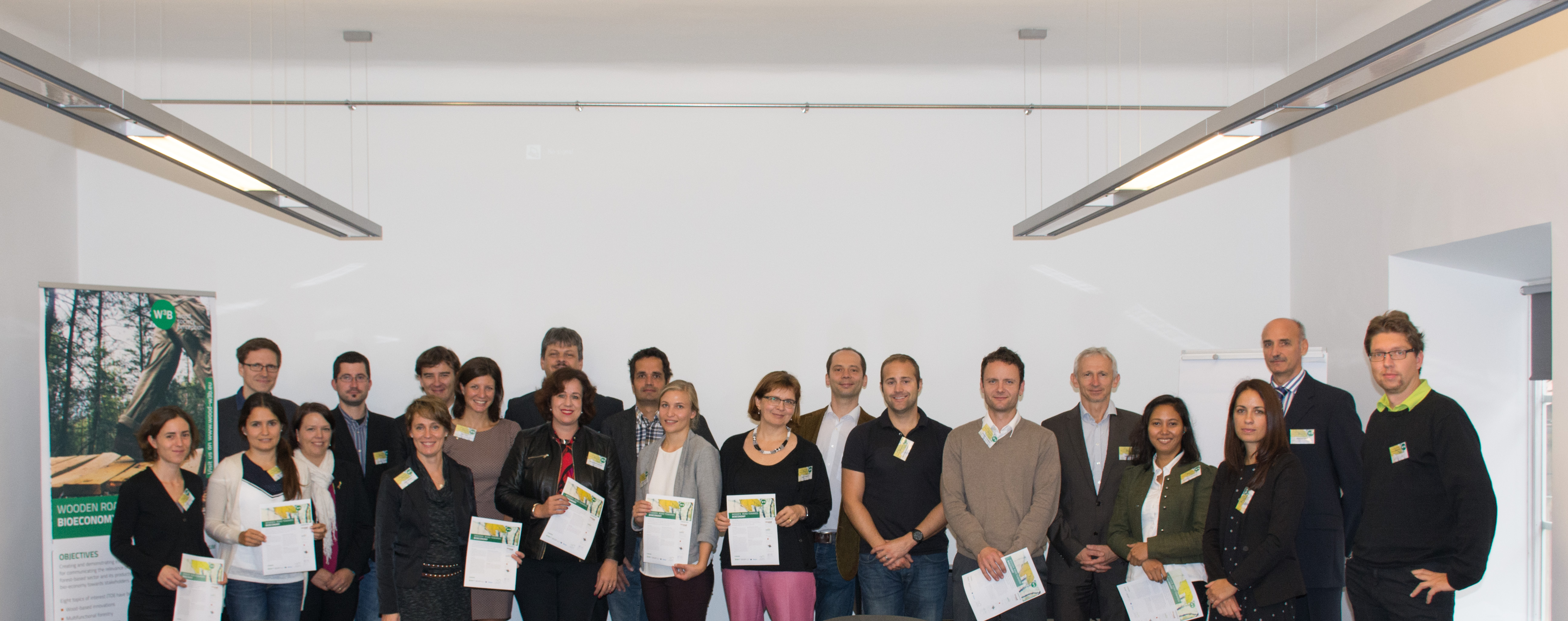
What We Wood Believe (W3B) - Societal Perceptions of the Forest-Based Sector
Scope of the project
- Map the current state of forest-based sector communications
- Research the societal perception of the forest-based sector
- Use living labs as a tool for the development of narratives for social media marketing
- Assess the efficiency of the narratives using cognitive response experiments
- Provide recommendations for successful communication strategies in the future
The survey aims to provide suggestions for the future communications of the forest-based sector on sustainability. It covers topics such as sustainable forest management, the role of wood and forests in global warming, and the development of innovative wood products that can make our lives more sustainable, among others.
During four months more than 1,500 people participated in the W3B survey answering questions which addressed eight different topics of interest (TOI). Now the first results are available. Here we share some preliminary results from the TOI Building With Wood.
One of the W3B’s interests when asking the general public about ‘Building with Wood’ was to determine the importance they placed on different attributes of buildings. We asked them to rate the importance of 12 attributes of buildings related to wood on a 5-point scale ranging from “Not at all important” (numerically, 1) to “Very important” (numerically, 5). The mean value of all respondents so far was greater than 4, corresponding to answers between “Important” and “Very Important”. Considering how close these overall ratings are, their relative importance becomes more interesting and reveals three general groups of importance (Fig. below). These groups are the relatively low importance (red dots), moderate importance (yellow dots), and high importance (green dots).
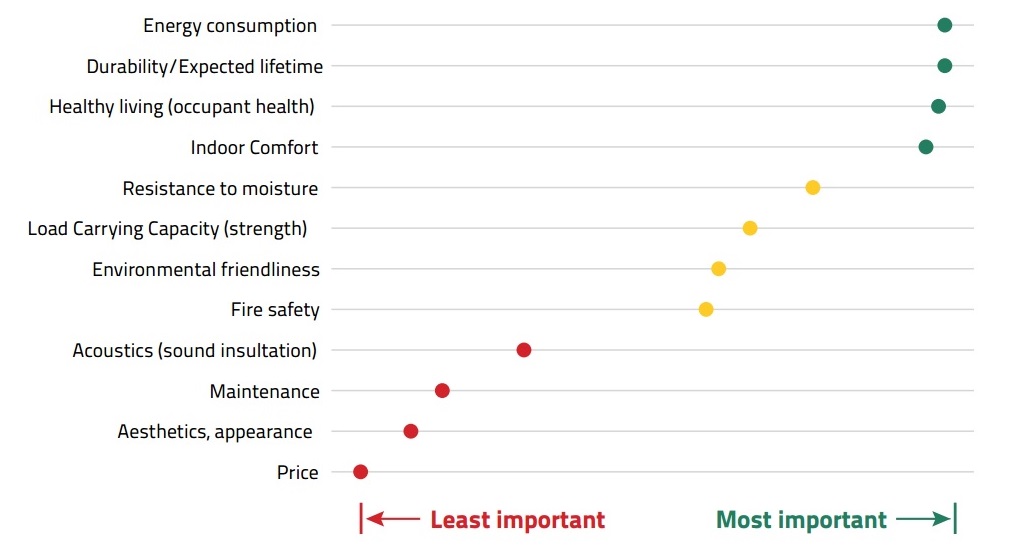
Local Action – Global Impact: Afforestation Initiative in Moldova
On December 14, 2012, the Vorniceni Village Council, Republic of Moldova, approved a decision (nr. 8/16) concerning changing the destination of a land area for the purpose of arranging of a square (2,65 ha), this constituting one of the objectives of the Socio-Economic Development Strategy of Vorniceni village. The Decision of the Village Council to plant trees on the respective public plot was taken due to the mutual initiative of the local civil society and the "Terra-1530", NGO. From the very start more partners were committed to finding a solution for a community problem of global importance.
Forests provide a lot of diverse benefits to societies. Besides the fact that wood processing and forest products provide significant contributions to the development of national economies, forests play a major role in maintaining the natural ecological balance. Unfortunately, Republic of Moldova has the lowest percentage of forest area in Europe- 11.4 %.
(1) It is an opportunity for more than 5000 inhabitants of Vorniceni village to participate in the project implementation particularly those working abroad that may contribute financially. (2) There are more and more discussions about ecological education in Moldova today but there is a stringent lack of a real model. The respective square, arranged in Vorniceni with the participation of international experts, may become such a model. It may become a best practice for local public administration, because it is for the first time in the history of the village when all the people will have the opportunity to be involved in an activity. (3) As the village high-school is located in the neighborhood of the plot it will make possible to have outdoor lessons in the square, especially biology and other outdoor activities. (4) Short videos will be posted on YouTube for the purpose of showing the activities that will take place in the square. (5) The continuity of the project is guaranteed because according to our experts at least 5-8 years are necessary for the completion of the square arrangement work. The forestation of the 2,65 ha area is to begin in 2016-2018.
Over a period of three years after planting of square the representatives of Forest Research Institute will control the plantation and its quality. Also there will be supplied the necessary care of all the planted trees and shrubs. For providing of this care we will involve people from the village (new work places for youth). Creation of a square will also provide the exchange of experience with other countries, which allows us to involve new financial resources at an international level.

Almost 75% of Timber on the Dutch Market Sustainably Produced
The market share of certified sustainably produced sawnwood and wood based panels on the Dutch market increased in the period 2011-2013 from 65.7% to 74.0%. The market share of certified sustainably produced
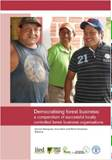
Democratic Forest Business Models: a Harder but More Rewarding Path
Our decreasing forest landscapes are under huge pressure to deliver local and global needs. Governments are faced with two contrasting business models: the profit-maximising, often run by distant owners; or locally controlled forestry (LCF), run democratically to sustainably meet various local needs without necessarily maximising profit. Governments are increasingly granting local resource rights to meet development targets and protect forest landscapes to deliver benefits into the future. A compendium of 19 case studies illustrates the viability of this approach and reveals the structures enabling LCF businesses to survive and compete. These findings can now guide the scaling-up of democratic business models through enabling investments by programmes such as the Forest Farm Facility (FFF) and its knowledge network partners in the Forest Connect alliance.
Download
hereDemocratising Forest Business: a Compendium of Successful Locally Controlled Forest Business Organisations
Forests have to cater to the multiple needs for local goods and global goods which is a tall order because many of these needs compete with one another and are growing all the time. Reconciling competing needs is best handled democratically. The challenge is to understand how the democratisation of locally controlled forest business can be made to work economically. With local control comes a significant business challenge – how to reconcile the multiple perspectives of local forest-family smallholders, communities and indigenous peoples into coherent and viable business value propositions? At its core, this is an organisational challenge. This book presents 19 case studies from 14 developing countries that show how local people have been democratising forest business and draws a set of conclusions from analysis of these case studies which are essentially a set of lessons of what makes for success. It is hoped that such lessons will assist serious development efforts to scale-up the organisation of locally controlled forest business – both for the local and the global public good.
Download or order
hereThe Dragon and the Giraffe: China in African Forests
China needs Africa’s forests, and Africa knows it. Chinese investments in African forests and woodlands are growing fast. China is the largest importer of tropical timber in the world — possibly accounting, in recent years, for half of all tropical trees logged and exported, and over 75 per cent of Africa’s timber exports. Investments in agribusiness, mining and infrastructure in Africa’s forest and woodland areas are growing too. Yet those in Africa and China who can best help chart a sustainable course for these investments are poorly linked. A new China–Africa partnership, focused on forest governance, is engaging with Chinese investors and enterprises, to tackle key problems in the illegal timber trade and seize opportunities for more sustainable Chinese investment in land-use sectors — starting in Cameroon, Democratic Republic of Congo, Mozambique and Uganda.
Download
here (Also available in French and Chinese)
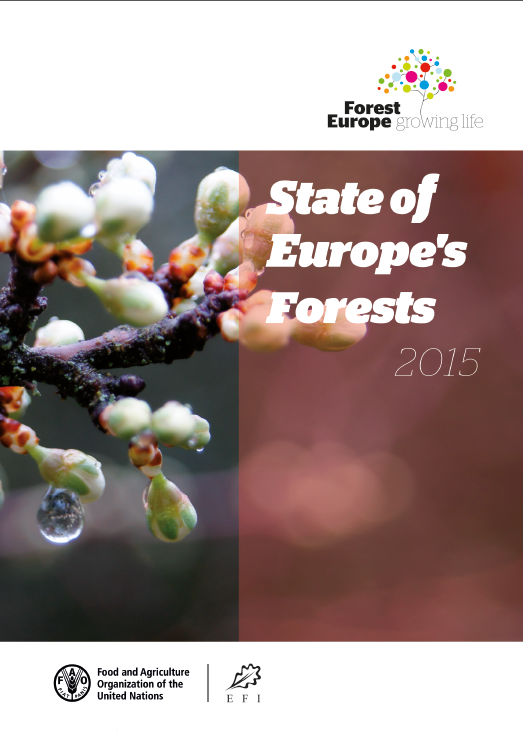
State of Europe’s Forests 2015
The FOREST EUROPE report ‘State of Europe’s Forests 2015’ (SoEF 2015) analyses the current status, trends and policy responses related to forests and forest management in the pan-European region in the period 1990-2015. It was presented at the 7th FOREST EUROPE Ministerial Conference on 20-21 October 2015 in Madrid, Spain.
Summary for Policy Makers, State of Europe’s Forests 2015
The Summary for Policy Makers is a brief document based on information included in the ‘State of Europe’s Forests 2015’ FOREST EUROPE report. This document offers a comprehensive overview of European forests, their current status, trends and policy responses related to them, as well as an insight into sustainable forest management (SFM) in the pan-European region.
The publications will be posted at the FOREST EUROPE
website.

Implementation of the FOREST EUROPE Commitments – National and pan-European actions 2011-2015
This FOREST EUROPE report analyses the level of implementation of FOREST EUROPE commitments at national and pan-European levels, up to the 7th FOREST EUROPE Ministerial Conference, and focusing specially on the activities carried out since the 6th Ministerial Conference held in Oslo in 2011.
Meeting the Goals for European Forests and the European 2020 Targets for Forests
This FOREST EUROPE report, carried out by the European Forest Institute, includes a mid-term evaluation on the level of accomplishment of the Goals for European Forests and the European 2020 Targets for Forests, which were agreed at the Oslo Ministerial Conference in 2011.
These two publications were presented at the 7th FOREST EUROPE Ministerial Conference and then posted at the FOREST EUROPE
website.
FOREST EUROPE Expert Group and Workshop on a pan-European Approach to Valuation of Forest Ecosystem Services – Final Report
This FOREST EUROPE report takes onboard the work that was displayed among the participants in the Working Group and the Workshop on pan-European approaches to valuation of forest ecosystem services that were established in order to implement the focus area of the FOREST EUROPE Work Programme 2011-2015 related to this topic.
The publication can be downloaded from this
link. 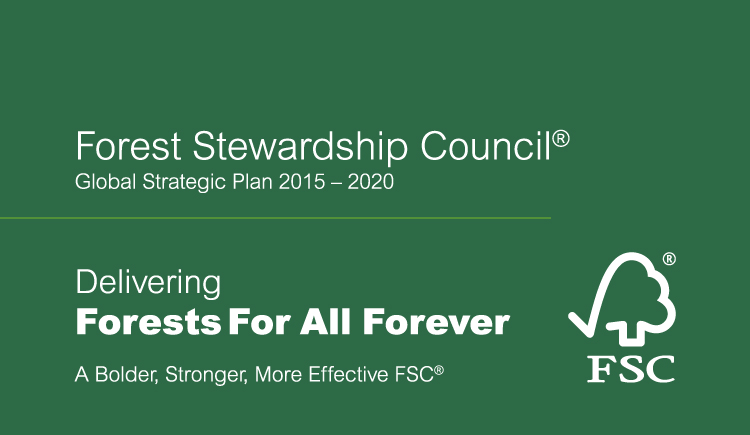
20 per cent by 2020: New FSC Global Strategic Plan 2015-2020
With the release of t
he FSC Global Strategic Plan 2015-2020 FSC is declaring our intention to more than double our share of global forest-based trade in the next five years, to 20 per cent. “Entering into our 22nd year we know we have to be bold in our vision. Our membership, and our 30,000 certificate holders, have committed to working with us as we grow. But FSC is a market tool, and by aiming for 20 per cent we are choosing to take a leading role in shifting the global forest trend toward sustainable use, conservation, restoration, and respect for all,” stated FSC Director General, Kim Carstensen.
“The plan builds on our unique and defining quality as a convener of diverse groups, and outlines the steps we will take to shift the market towards responsible forest management,” said Mr Carstensen.
The new FSC Global Strategic Plan 2016-2020 has an emphasis on increasing FSC certification in tropical countries, and providing voice to those most affected by mismanaged forests – Indigenous Peoples, workers, communities, women, and smallholders - while meeting the needs of our current certificate holders.
“The three strategies acknowledge FSC’s three core areas of focus – streamlining the FSC standards framework and governance; increasing the value of FSC in the marketplace; and the transformation needed within FSC to excel in these two core areas. We look forward to working with all our stakeholders and creating many new alliances over the next five years to make our strategy a reality,” concluded Mr Carstensen.
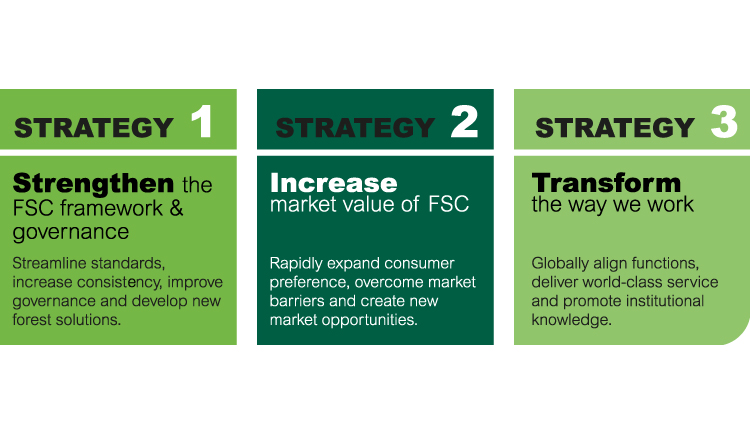
Vacancy Announcement: Senior Lecturer in Business Administration 100% Department of Forest Products, Uppsala, Sweden
Business administration and business development of the forest industry in a sustainable bio-economy. Business strategy, marketing, innovation, production economics and supply chain management with focus on the forest industry in a wide perspective. Last date for application is November 16, 2015. Reference number: 3780/2015.
The full announcement is available in
English and in
Swedish.

XIV World Forestry Congress Issues 2050 Vision for Forests and Forestry
The XIV World Forestry Congress set out its vision of how forests and forestry should look in 2050, adopting the Durban Declaration in Durban, South Africa, in September 2015. The largest gathering on forests this decade underlined the vast potential for forests to play a decisive role in ending hunger, improving livelihoods and combating climate change.
The declaration outlined a series of actions needed to realize the vision, including further investment in forest education, communication, research and the creation of jobs as well as the need for new cross-sector partnerships.
Almost 4,000 delegates from 142 countries attended the congress, including representatives from civil society, intergovernmental organizations, NGOs, universities and the private sector as well as around 30 ministers and deputy ministers.
The Congress also issued a message to the United Nations Sustainable Development Summit stressing the importance of forests in achieving many of the Sustainable Development Goals. In a second message directed to the Conference of Parties to the United Nations Framework Convention on Climate Change, the Congress warned that climate change poses a serious threat to the planet, forests and forest-dependent people, but also underlined that countries’ responses to climate change could present new opportunities for improved forest financing and governance.
Held every six years, this year's World Forestry Congress was hosted by the Republic of South Africa with technical support from FAO and marked the first time the Congress was held on African soil since its inception in 1926.
Read more about the Congress outcomes:
IUFRO’s Strong Presence at the World Forestry Congress in Durban
The XIV World Forestry Congress, organized by the Food and Agriculture Organization (FAO) of the United Nations and hosted by the Republic of South Africa in September 2015 brought together the global forestry community to review and analyse the key issues and to share ways of addressing them.

7th FOREST EUROPE Ministerial Conference, Madrid, Spain, 20-21 October 2015
It was expected that the ministers responsible for forests in Europe would adopt at this meeting decisions and resolutions with regards to high priority topics for forests, such as: the enhancement of the social functions of forests and the potential role of forests in the transition to a green economy; the protection of forests in a changing environment; the need to address global challenges related to forests at the regional level; the updating of the pan-European Criteria and Indicators for Sustainable Forest Management; and the future directions of the FOREST EUROPE process. Ministers’ commitments on these topics will serve as a framework for decisions related to these matters in the different European countries and will promote action at a pan-European level.
The 7th Ministerial Conference takes place the same year that the FOREST EUROPE process reaches its 25th anniversary.
FOREST EUROPE Extraordinary Ministerial Conference, Madrid, Spain 21 October 2015
The FOREST EUROPE Extraordinary Ministerial Conference met to address a specific aim. It was explicitly established in the Oslo Ministerial Mandate for Negotiating a Legally Binding Agreement on Forests in Europe. This Mandate, endorsed by the ministers at the 6th FOREST EUROPE Ministerial Conference held in Oslo in 2011, launched these negotiations and established an Intergovernmental Negotiating Committee (INC) with this aim. The Oslo Mandate decrees that the INC will present its results to an Extraordinary FOREST EUROPE Ministerial Conference for its consideration.
This Conference received the results of the Intergovernmental Negotiating Committee for a Legally Binding Agreement on Forests in Europe.
More information is available
here or
here.
2016 - IUFRO Asia and Oceania Regional Congress, Beijing
2017 - IUFRO 125th Anniversary Congress, Freiburg
Save the dates for what will surely be two major events focused on forest research.
On 24-27 October 2016 the International Union of Forest Research Organizations (IUFRO) will hold a regional Congress in Beijing, China. The Congress will be hosted by the Chinese Academy of Forestry (CAF). The Congress website has just been opened and will be gradually filled with updated information: http://www.ircao2016.cn/
On 19-22 September 2017 IUFRO will celebrate its 125th Anniversary with a major scientific meeting in Freiburg, Germany. Founded in 1892 in Eberswalde, IUFRO will return to Germany in 2017 to celebrate its 125th anniversary to look back on more than a century of forest research as well as to trace out the organization's path into the future. Follow the updates on the Congress website: http://iufro2017.com/
Both congresses will provide scientists from all forest-related disciplines with a unique platform to share and discuss their research with peers from round the globe and with decision makers.
How to contribute? Read the instructions here. Deadline for the next issue is 15 December 2015.
Kindly note that the content and editing of the texts is on the responsibility of each contributor.
We work in cooperation with the Global Forest Information Service.
















